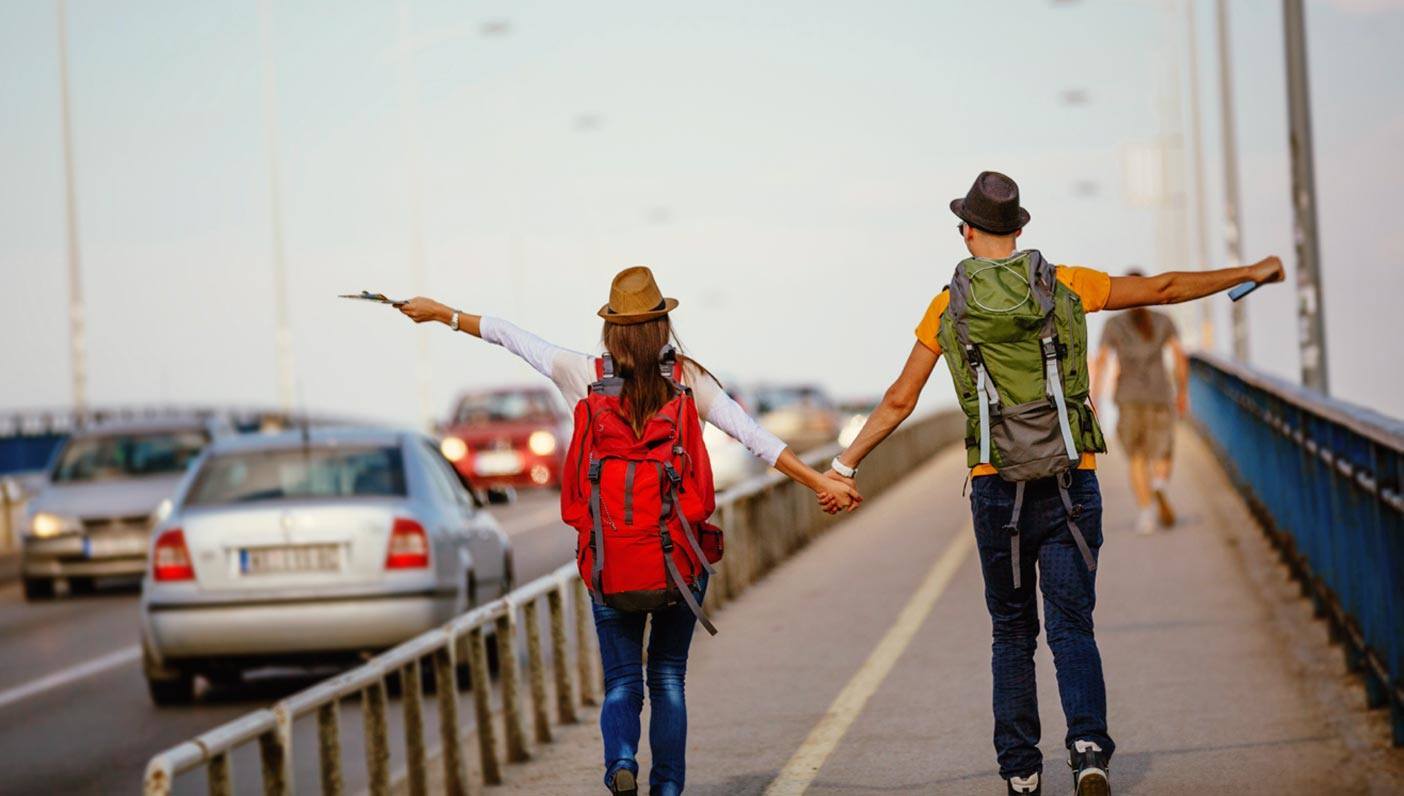
Celebrate #CarFreeDay London with Wanderlust! This year, we are honoured to be supporting the largest #CarFreeDay London celebration ever for Mayor of London + Transport for London by reimagining mindfulness and wellbeing in car free London. For tickets and more information, click here.
Whether you call it ecotourism, traveling green, or ethical travel, maintaining a mindful attitude as you trek across the globe helps to minimize your carbon footprint. Every action we take directly impacts the environment. If we advocate a mindful way of life, it’s only fair to extend that philosophy into how we travel.
There is hope for the wanderlusted yogi. Sustainable travel doesn’t mean forgoing a bed and all forms of transportation, but rather making simple choices to lessen our impact on a given destination. To help keep you and Mother Earth happy, we’ve assembled some easy ways to travel green and see the world.
Walk when you can.
Walking and biking are hands-down the most environmentally-friendly ways to explore a new city. These methods are also often more fun, and allow you to sneak in some exercise while wandering strange places. If you’re traveling long distances, take public transportation. If you need to rent a car, opt for something with good fuel efficiency. Looking for alternative methods of transportation not only helps the planet, but encourages you to notice the smaller details you might have missed traveling solely by car.
Fly mindfully.
If flying is your only option, there are still ways to minimize your carbon footprint. Finding round-trip flights is one technique, as it is takeoffs and landings that create most of an airplane’s carbon emissions. Some airlines also allow you to buy “carbon offsets,” which are said to help reduce greenhouse gases. You can then donate the money or miles to forest conservation, renewable energy projects, and other carbon reduction program. Choosing an economy seat when booking a flight is another way to vote for green travel, as first class seats result in a larger carbon footprint, as you are taking up space that could have been used to transport more people.
Search for green hotel options.
Ecotourism is hot, and there are likely more options for hotel stays than you would imagine. If you’re traveling, check to see if the hotel has a Green Tourism Business Scheme, which evaluates a hotel on its sustainable site development, water savings, indoor environmental quality, material selection, and energy efficiency.
You also choose hotels with recycling programs, solar power operations, energy-efficient lighting, and other sustainability initiatives. And while there is no scientific energy backing up the energy-efficiency of Airbnb options, staying with local hosts or friends is arguably a better option. Many houses and apartments even advertise as being “eco-friendly.” Regardless of where you stay, be mindful to turn off the lights, limit water use, and avoid hotel laundry.
Leave the “do not disturb” sign on your door.
While you might be tempted to indulge in the free cleaning service from the hotel, it’s more energy efficient to avoid excess chemical cleaning agents, the electricity used to power vacuum cleaners, and the washing of bed linens. Ask yourself whether or not your room really needs cleaned, or if you can make your bed yourself.
Bring a reusable bottle or mason jar.
Hydration is so important for travel, and you’ll likely find yourself more thirsty than you are at home. Rather than use the plastic airplane cups, or consecutively purchase water bottles, bring your own reusable bottle. Mason jars and thermoses are also great for when purchasing drinks such as ice coffee, tea, and juices. If you think of all the bottles and drinks you go through on a trip, using a reusable bottle makes a huge difference.
Go paperless as much as possible.
In between maps, tickets, and travel guides, it’s easy to tear through a bunch of paper while traveling. Nowadays we don’t need to always print our documents, and when we do we can recycle the paper. This also allows for convenience and lighter travel; having your smartphone scanned at airports is simple, efficient, and green-travel friendly.
This also comes in handy when considering travel maps and tourist guides. There are dozens of guides available for e-readers, making it easy to go paperless when conducting research. Not only do these digital books help decrease waste, but they also lighten your load while traveling. If you’re a traditionalist, buy used or return the maps after use.
Buy locally made products and souvenirs.
We all love exploring markets and foreign shopping marts, and it’s fun to surprise your loved ones with a token from your travels. When buying presents for your friends (or yourself!) strive to select products that are made by local artisans. You’re supporting small business owners while simultaneously receiving a unique and authentic product. Items that have been imported have a much larger carbon footprint, and we bet you’d rather not support souvenirs made on some faraway assembly line that doesn’t treat its workers well.
Pack light.
Travel light, pack light, be light. When it comes to eco-travel, the words have never rang more true. Not only does traveling light decrease stress, but it also has a pretty significant environmental impact. The heavier your luggage, the more fuel needed for travel. When you travel light, you’ll experience more freedom and less decision making. (The environment isn’t complaining, either!)
How do you travel green?
—

Amanda Kohr is a 25-year-old writer and photographer with a penchant for yoga, food, and travel. She prefers to bathe in the moonlight rather than the sun, and enjoys living in a state of the three C’s: cozy, creative, and curious. When she’s not writing, you can find her driving her VW Bug, looking for the next roadside attraction or family diner. She also roams the internet at amandakohr.com and through Instagram.